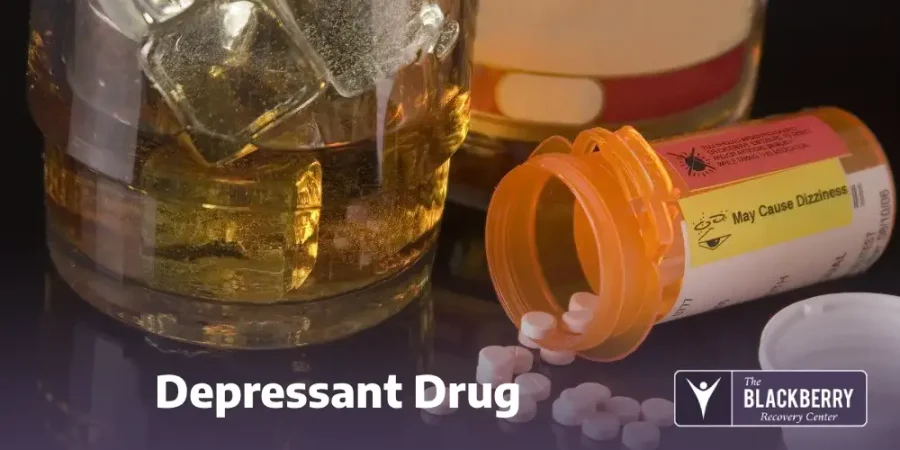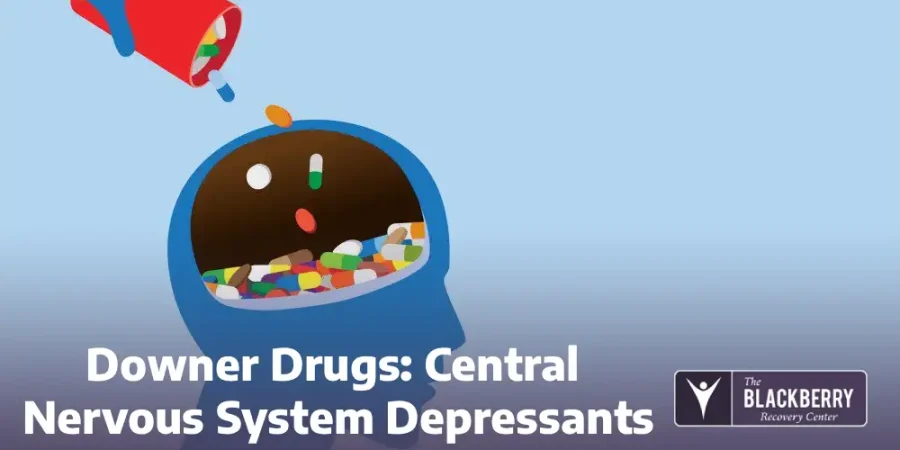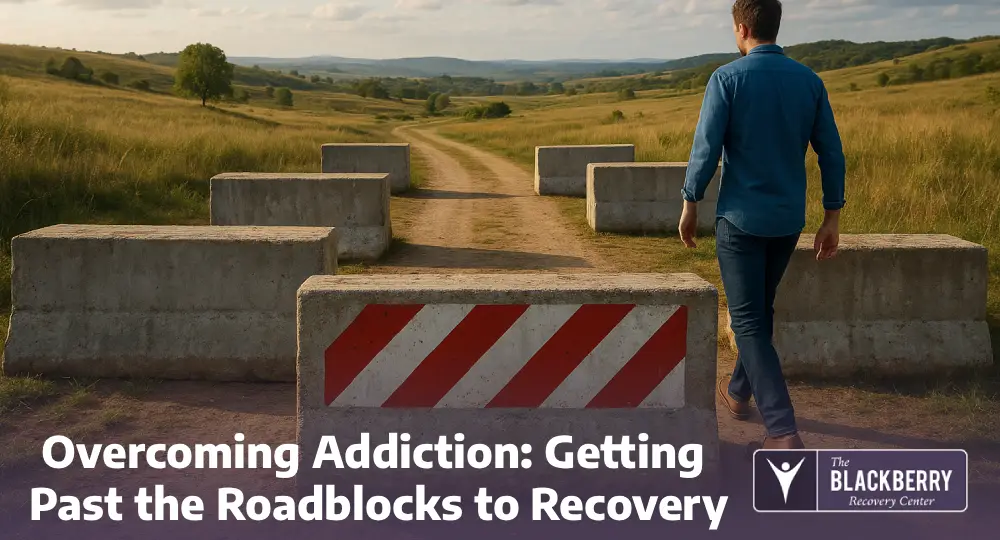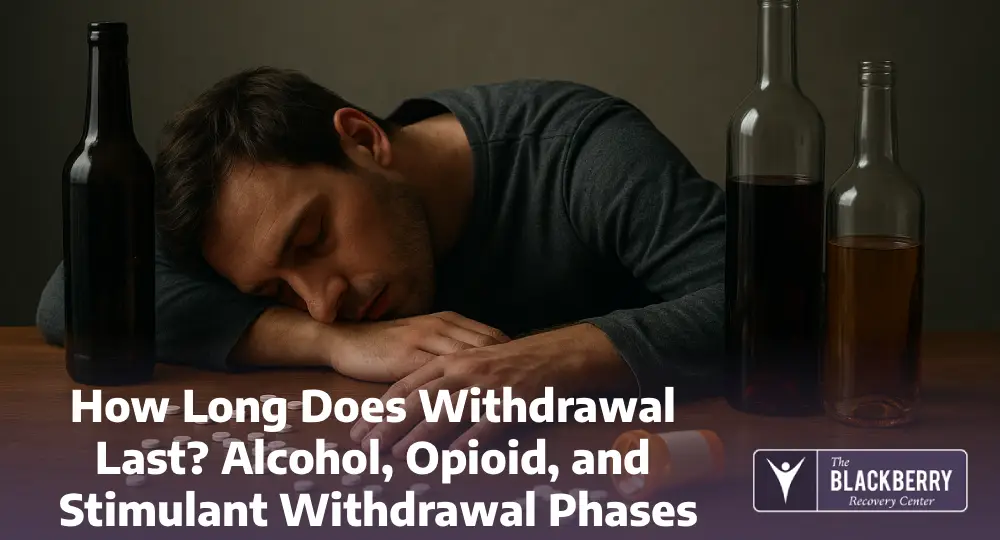“Downer drugs” is a slang term that can encompass a variety of legal and illicit drugs. Downers are central nervous system (CNS) depressants that act to slow down the body and the brain. While downer drugs can be helpful aids in managing many conditions, they can also be dangerous if misused. Learn more about downer drugs, how they’re dangerous, and what to do if someone you know has a problem with CNS depressants.
What Are Downer Drugs?
Any drug that depresses, or slows down, the central nervous system can be classified as a downer drug. These drugs do not make a person sad or depressed, rather they reduce the rate at which the brain functions to create a relaxed state. Most downer drugs achieve this by altering the brain’s chemistry to increase gamma aminobutyric acid (GABA), a chemical in the brain that promotes relaxation.
Types of depressants, or downers, include medications classified as sedatives, hypnotics, and tranquilizers. In addition, alcohol and prescription pain killers like opioids are also considered CNS depressants.
Why CNS Depressants Are Useful
The effects of depressants calm the body. Therefore, downer drugs are useful for treating anxiety, panic, and sleep disorders. Additionally, downer drugs can be used prior to surgery to sedate a person for a procedure or to manage pain once the procedure is completed. Given this, there are many kinds of CNS depressants available, and while they all work to slow the body down, each downer also works in the body a little differently.
Side Effects of Depressants
Specific side effects of downer drugs will depend on the actual substance taken. However, generally speaking, side effects of depressants include:
- Drowsiness or sleep
- Dizziness
- Confusion
- Dry mouth
- Slurred speech
- Shallow breathing
- Low blood pressure
Dangerous levels of CNS depression may also occur, especially if downers are being used recreationally. In addition, it is possible to overdose on downer drugs. Signs of overdose on CNS depressants include:
- Extremely low breathing rate
- Vomiting
- Significant confusion
- Slow reflexes
- Intense mood swings
- Unconsciousness
- Coma
Other serious side effects of downer drug use include addiction and physical dependency on the drug. Unfortunately, once the body is dependent on a CNS depressant, withdrawals will occur if the drug use is suddenly stopped.
Downer Drugs Dependency & Addiction
Drug tolerance and physical dependency are common with CNS depressants. Tolerance means that over time it will take more of the drug to create the same effect. This can take place in as little as two weeks of using downer drugs like benzodiazepines.
Substance dependence occurs when the body has adjusted to the drug use and now depends on it to function normally. Long-term use of any downer has the risk of physical dependency, even when taken as prescribed. In order to avoid drug withdrawal symptoms once dependent, a tapering schedule to gradually wean a person off of downer drugs is usually used.
On the other hand, addiction to downers is often more of a psychological need to continue taking the drug despite any negative effects. Addiction to any drug is characterized by drug-seeking behavior that overtakes a person’s life. Symptoms of addiction often include any abrupt changes in behavior and physical health, such as hygiene, sleep schedules, moods, or weight.
Depressant Drug

Depressant Drug
By far the most popular and overlooked CNS depressant is alcohol. In small amounts, alcohol is metabolized in the body without causing any major effects. However, in large amounts alcohol will slow the central nervous system to the point of unconsciousness. Chronic heavy alcohol use can also lead to a host of other health-related issues, such as liver disease.
Outside of alcohol, downer drugs can be legally obtained or illicitly manufactured. Illegal depressants include drugs such as GHB and heroin. The illegal nature and unknown ingredients in GHB and heroin make them exceptionally dangerous downer drugs, especially if they are combined with alcohol or other CNS depressants.
However, most downer drugs are legal and include many prescription medications. Classes of CNS depressants that are commonly prescribed include:
- Benzodiazepines:
Benzodiazepines (benzos) are currently among the most prescribed medications in the U.S. Benzos are highly effective at treating anxiety and sleep disorders in the short term, but pose a significant risk of dependency and addiction when used for longer than a few weeks. Aside from downers, street names for benzos include Zannies, Zbars, Blues, Bars, and Chill Pills. - Sleeping Pills (Z Drugs)
Sleeping pills dubbed Z drugs are hypnotic medications prescribed for insomnia (i.e., Ambien, Sonata, and Lunesta). Z drugs are thought to be less addictive than benzos but should still be used cautiously due to their habit-forming potential. - Opioids
Opioids are the most widely prescribed pain medication and are incredibly addictive. Examples of opioids include Percocet (oxycodone), Vicodin (hydrocodone), and OxyContin (time-released oxycodone), as well as illegal drugs like heroin. Opioid overdose is very common, and is characterized by the “opioid triad” of pinpoint pupils, slowed breathing, and loss of consciousness. - Barbiturates
Barbiturates (barbs) were popular in the 1970s for treating anxiety, sleep, and seizure disorders. However, due to the risk of dependency and overdose, they are no longer as commonly prescribed. Examples of barbiturate prescriptions include amobarbital (Amytal), butabarbital (Butisol), pentobarbital (Nembutal), and secobarbital (Seconal).
Mixing Medications: The Dangers of Combining Downer Drugs
Habitually misusing more than one substance at a time is called polysubstance abuse or polydrug use. While polysubstance abuse may be intentional, many people unknowingly put themselves in danger by combining prescriptions or by drinking alcohol with prescription pills.
For example, drinking with drugs that slow down the central nervous system, such as mixing Xanax with alcohol, can amplify the respiratory depression caused by both alcohol and the prescription depressant. Combining these substances is far more dangerous than using either alone. Similarly, combining CNS depressant drugs, such as opioids and benzodiazepines, could also result in a drug overdose.
Alternatively, combining uppers and downers, such as mixing cocaine and Xanax, is especially hard on the heart. This is due to the fact that the stimulant is telling the brain to increase the heart rate while the depressant is acting to slow it down. The result could trigger heart dysrhythmias or in extreme cases, heart failure.
Ultimately, mixing drugs increases the risks of drug use and may result in addiction to two or more substances. If you find yourself or someone you know misusing downer drugs or a combination of uppers and downers, help is available.
Video
Driver was on CNS depressants during 17 car pileup that killed 5 in Austin
News Audio
After quitting antidepressants, some people suffer surprising, lingering symptoms – NPR
Phillipa Munari started antidepressants in 2003. Her doctor recommended one, she said, after she complained of feeling tired. She didn’t think it helped, but she kept taking it anyway. When she decided to stop taking the drug 10 years later, her doctor helped her taper off it.
FAQ
- What are central nervous system (CNS) depressants?
Central nervous system depressants are drugs that slow down brain activity, leading to effects like relaxation, drowsiness, and reduced anxiety. Common types include benzodiazepines, barbiturates, and sleep medications. - What are “downer drugs” and how do they differ from stimulants?
“Downers” are slang for CNS depressants, which calm the body and mind. They are the opposite of stimulants (“uppers”), which increase energy, alertness, and heart rate. - Are CNS depressants safe when prescribed by a doctor?
Yes, when used as directed, CNS depressants can be safe and effective for treating conditions like anxiety, insomnia, and seizures. However, misuse or combining with other substances (like alcohol) can be dangerous. - What are the signs of CNS depressant abuse or overdose?
Warning signs include confusion, slurred speech, slowed breathing, poor coordination, and extreme drowsiness. In severe cases, overdose can cause coma or death. - Can you become addicted to downer drugs?
Yes, prolonged use can lead to dependence and addiction. It’s important to follow medical guidance closely and never mix these drugs with other depressants without supervision.






